08 Dec Cities
City Design Optimisation
City Design Optimisation is an interdisciplinary research project that brings together the contributions of the Singapore University of Technology and Design's (SUTD) architecture, computer science and mathematics faculty and design professionals from the Urban Redevelopment Authority.The success of an urban development depends on the layout of its road network and parcels. When planning a site, however, it is difficult for the designer to predict the success of a given layout. Our work mitigates the many repetitive steps and calculations faced in site simulation by generating an optimised computational model. By intelligently generating many hundreds of options for a given site, we are able to search out its maximum potential.
A research challenge for city design optimisation is matching data-driven optimisation results with qualitative user preferences. Multi-objective optimisation returns a range of results that can be difficult for users to sift through in search of their preferred outcomes. By deploying our model through a custom web-based interface with back-end running on the cloud, we offer a simplified and accelerated optimisation workflow. This positions the research tool to be more accessible and useful for stakeholders.
Our current model will go beyond site layout and density optimisation to assess the complex interactions of multiple objectives including reduced urban heat island effect and improved walkability – two key criteria for sustainable urban development.
Find out more here.

A range of planning scenarios optimised for the Urban Heat Island effect generated by the City Design Optimiser by SUTD's Adaptive Design Lab.
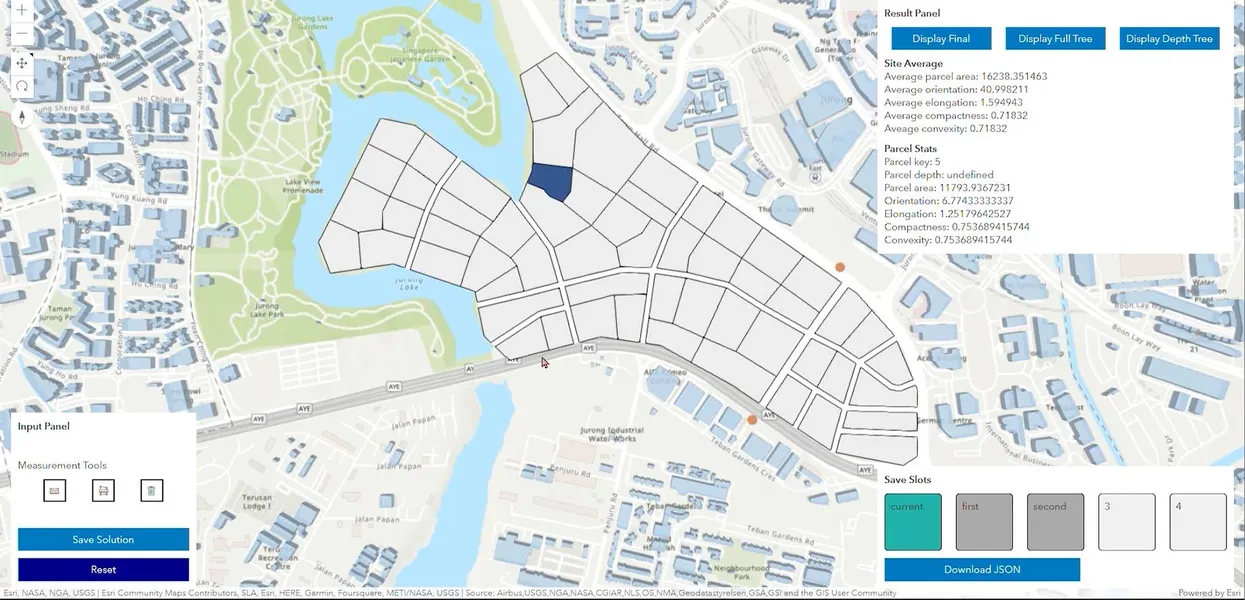
A screenshot from the web-based interface of City Design Optimiser, showing a road and parcel solution for a district.
Katakita: Participatory Design for Sustainable Development
Katakita is a digital urban design game, where multiple non-expert participants can generate options for equitable transit-oriented development in Jakarta. The potential of using games as a platform for discussion, evaluation and consensus-building is studied in the emerging field of participatory design and city planning.Katakita is set in the context of the ongoing MRT development and addresses the risk of transit-induced displacement for the lower income group. This game permits players to choose different roles to play and make design decisions by placing various building blocks in the multi-player environment. Game scores such as equitability and profitability are tracked to encourage discussions and negotiations.
Gaming sessions with local contacts from a variety of backgrounds were conducted with results shared in a thesis document and published conference papers.
Find out more here.
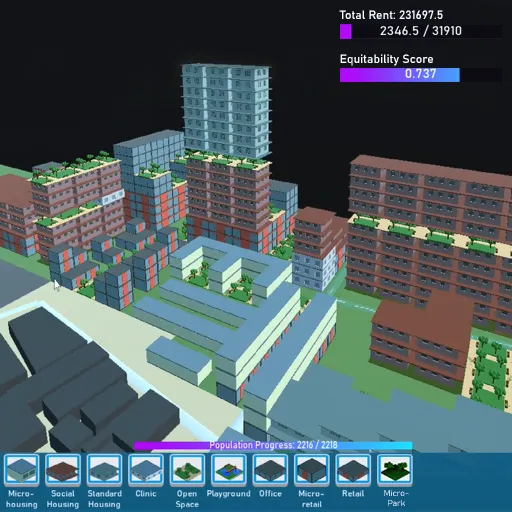
View of the game console for the Katakita participatory platform.
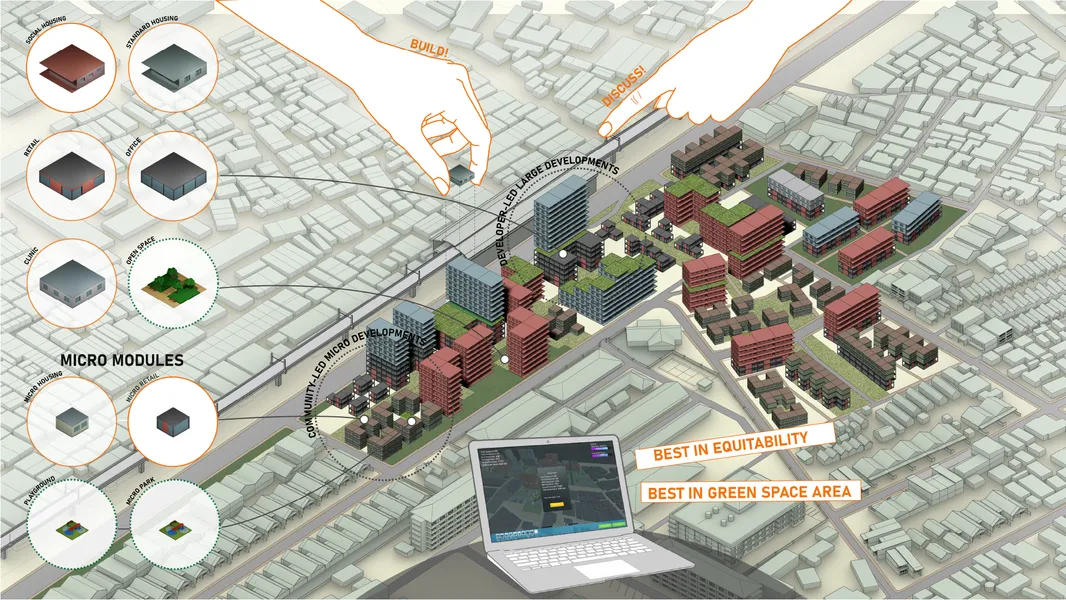
Concept diagram of design generation with the Katakita participatory platform.
Zero Waste Papershell Table
The Papershell Table fights the negative impact of "fast furniture" through design for a circular economy. Its triangular folded shell design allows it to be light weight and strong even when fabricated with recycled cardboard and PET felt. The table is accompanied by seating created from cut-off materials: a zero waste fabrication strategy. Friction fit tab and slot joints allow many cycles of quick disassembly and reassembly without the need for tools or fasteners – an essential feature for event furniture. Low-carbon, non-toxic and recyclable materials reduce its end-of-life impact to the minimum.The Papershell Table showcases the capability of digital design and fabrication to reduce waste to zero while still permitting playful and exploratory design. The folded shells of the table nacelle and legs are inspired by mid-century shell structures that are materially efficient. The Papershell Table is also designed to be able to fold and unfold many times.
The form of the triangular plates, however, presented a waste challenge: they left many oddly shaped, cut-off pieces that would have been discarded in conventional fabrication. We optimised the digital fabrication process to produce cut-off pieces with controlled dimensions and shapes that could be incorporated into additional furniture. A series of seating pieces were produced with the cut-offs to accompany the table at events.
Find out more here.
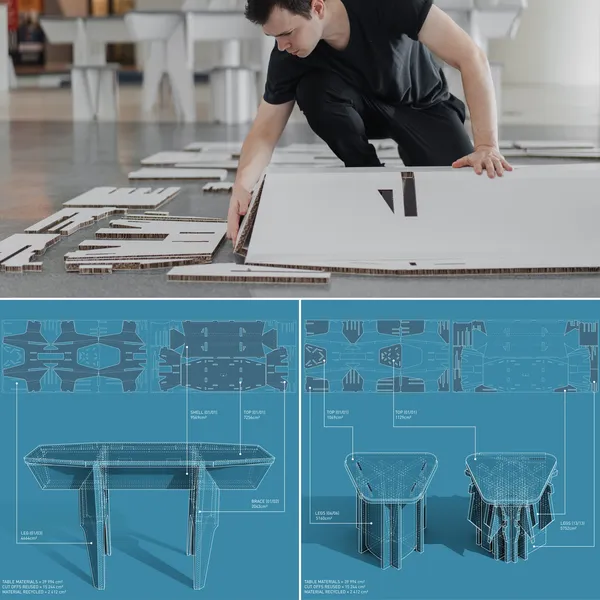
The Papershell Table is optimised such that fabrication cut-offs can be reused to make new furniture pieces.
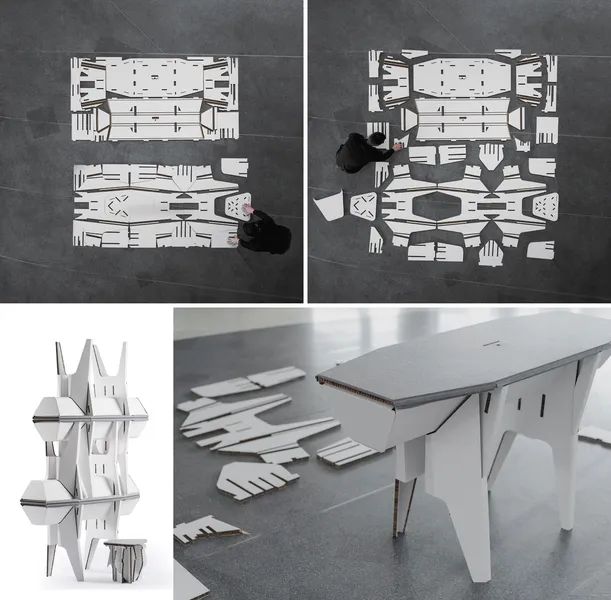
Friction joints allow many cycles of reassembly and reuse as well as easy recycling at end-of-life.
